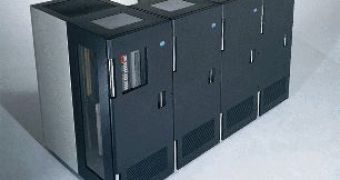Every big corporation (even more so in the IT world) has an impressive array of servers that hum day and night and use a lot of electric energy, space and maintenance time. Well, not anymore. Not anymore for IBM, at least, since the company plans to get rid of 3900 servers housed until now in its own data centers and bring in their place only 30 mainframes that will take up only a fraction of the space and that need a lot less energy. This move from thousands of servers to only a few mainframes can be interpreted as an attempt to gain the attention of corporate executives and managers on the advantages presented by mainframes when compared to smaller servers.
This is the first IBM action that impacts on its energy efficiency, since the announcement of the "Project Big Green Initiative", where the company said it would dedicate $1 billion every year in order to increase its energy efficiency. According to IBM, the movement from servers to mainframes will reduce its electricity bill by 80 percent and the company will save $250 million in overall costs. According to the news site InfoWorld, "the mainframe computer has been serving large enterprises for more 40 years, but they gradually turned to minicomputers and then to distributed servers, which were more affordable, leaving the mainframe behind". "Servers operate at anywhere from 10 to 20 percent of capacity because they usually run only one software application. But mainframes operate at an average 80 percent of capacity meaning one mainframe can replace multiple servers, said Bernie Meyerson, an IBM fellow, vice president of strategic alliances and chief technologist. And virtualization, the process of dividing a server into multiple logical servers to improve utilization, was pioneered on mainframes decades ago, he said".
"In major metropolitan centers there ain't another electron available," he said. "[A mainframe] eliminates the need to build more data centers and build power plants to feed them". According to IBM, the mainframe has a cost advantage over servers as they are centered around special processors designed by IBM to run in a Linux environment, unlike the standard x86 compatible processor that must support several environments and legacy application. IBM's processors for mainframes are specialized: the Integrated Facility for Linux (IFL for short), a Java running processor called Zip and a database optimized one called Zap.
The mainframe approach to data centers and big corporates seems like a good idea, but the mainframes themselves are costly, so not everyone is going to be able to buy one of them. Charles King, an analyst with Pund-IT Research said that while IBM tries to draw new lights on its mainframes, most users will prefer servers because they are more affordable. "The distributed server environment put a tremendous amount of computing power in the hands of users for much less money".

 14 DAY TRIAL //
14 DAY TRIAL //